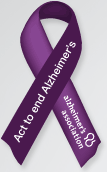 Recently my inbox has been assaulted by a particular type of spam I hadn't seen before. This is the ecard spam which claims I have received a card from a friend, classmate, family member, co-worker...all kinds of relational people I might have hoped to hear from but don't recognize in this format.
Recently my inbox has been assaulted by a particular type of spam I hadn't seen before. This is the ecard spam which claims I have received a card from a friend, classmate, family member, co-worker...all kinds of relational people I might have hoped to hear from but don't recognize in this format.
I admit that I opened the first one and was preparing to click on the link within when I noticed that it wasn't a webpage. Instead it was a set of numbers which I guess was an IP address. When I realized that there was no real address in the link I tried to find the ecard company that it came from. I found a page but no legitimate functioning on it. There was a place where I could put in the number of the ecard but it gave me the same numbered address. I decided to give it a pass. Now, after a bit of research, I'm glad I did.
Apparently, some of these links take you to a webpage which contains nothing and instead connects you to a worm. Others are from major spam servers. All in all it isn't a good thing to get one. Since that first one, my receipt of these letters has grown by leaps and bounds. I'm ignoring them all. The sad thing is that I love getting ecards from my friends and regret the insult this type of spam is doing to the legitimate ecard industry.
How can you tell when one of these ecard letters is spam? Some common sense is helpful so you might want to read the following bits. I've noticed at least one difference between the good and the bad ecard letters.
1. Most legitimate ecard companies have your friend's name or email address as the sender and not their own. Sure, some ecard companies use their own name as the sending email address but these are ones you know and recognize.
2. Legitimate ecard companies don't know anything about your relationship with the sender. They could be your brother or a total stranger but the ecard company doesn't know if you are related to them, went to school with them, or graduated with them. So if the letter claims a relationship give it a pass and send it to the spam filter. Your friend did not give them that kind of info.
3. Don't click on links you aren't sure of. Links in letters can appear to be good but might not be. I use Firefox and Eudora. If you put your cursor over the link these browsers have the real address you are clicking on in the lower left hand corner of the window frame. You can use this to tell if you are seeing the real thing or being rerouted to somewhere else. If the email address isn't on the up and up don't click on it. If you really have to know go to the real ecard address by typing it into your browser and then manually enter the pick up code. If you got a card you can then pick it up safely. If you didn't then the code should get you some kind of error message.
That's pretty much it. Common sense, mixed with a healthy dose of skepticism, is a huge help in figuring out scams and spam. Lots of people have extra "throw away" email addresses. I've never done this. I'm basically lazy and don't want to go through the extra work involved. But don't go by me. If you are inundated with spam then by all means do something about it.
Be careful out there. If you like ecards and use them like I sometimes do why not send a nice letter to your friends telling them which ecard companies you use and then maybe they won't be deceived by the other kind.
Sunday, August 05, 2007
A little bit about spam
Subscribe to:
Post Comments (Atom)


















No comments:
Post a Comment